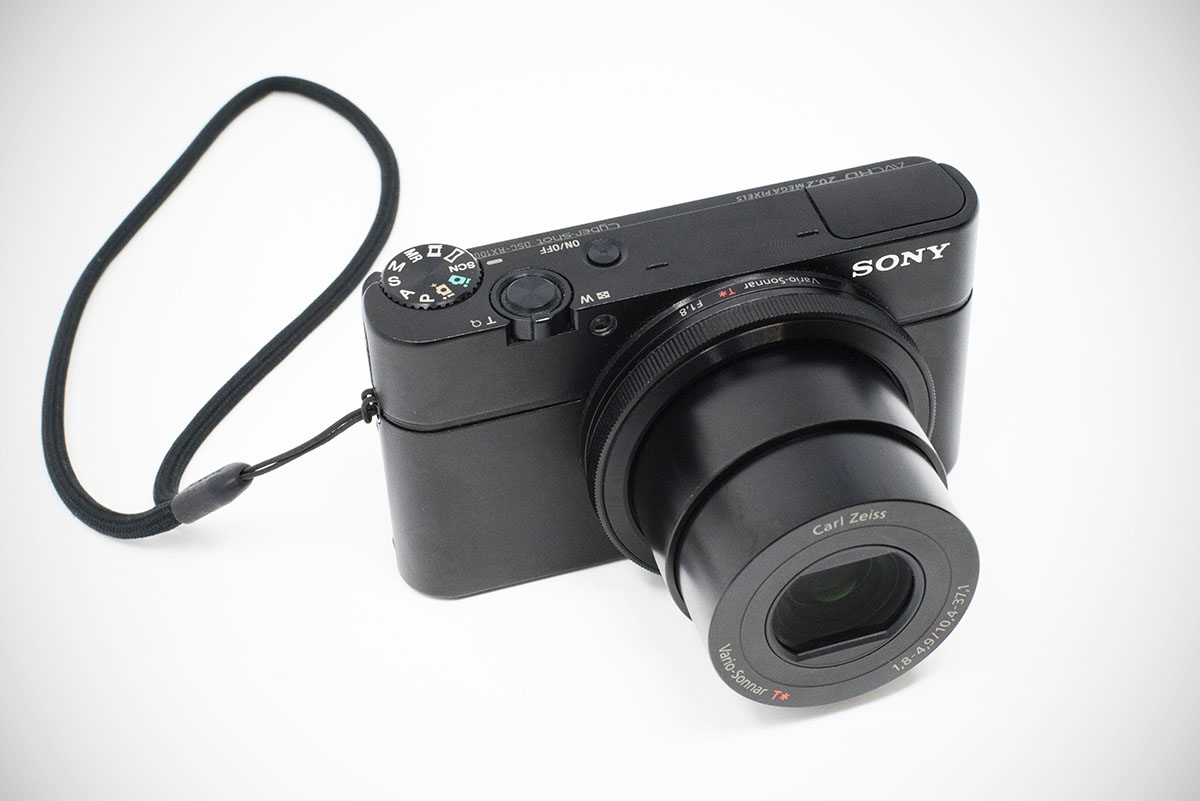
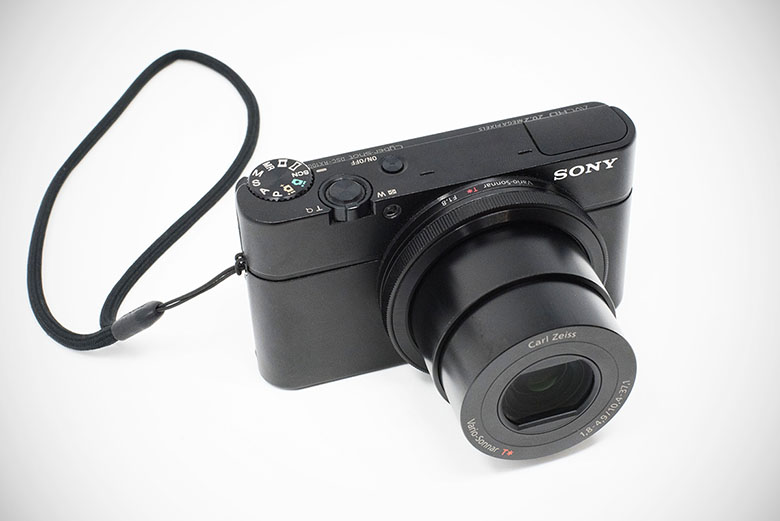
Switchback Travel


Switchback Travel
The lower end of the camera market is being challenged by smartphones, but advanced and mid-range point-and-shoots are thriving. In 2020, you can get a compact camera with a larger sensor, more megapixels, and more connectivity options and features than ever before (even 4K video is now readily available at this level). Whether you’re an amateur looking to improve your photography, or a professional looking for a smaller alternative to your DSLR or mirrorless camera, below are the year’s best point-and-shoots. For more background information, see our point-and-shoot comparison table and buying advice below the picks.
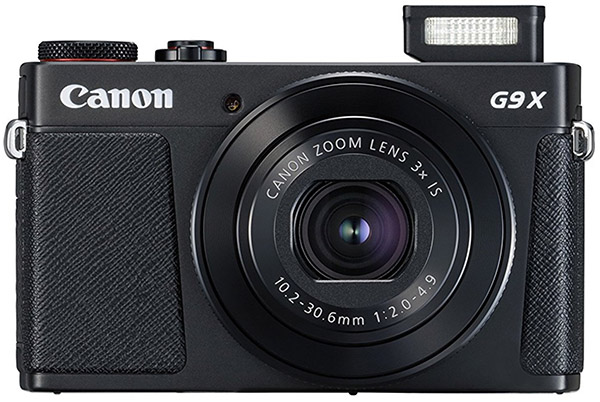 Sensor size: 116 sq. mm
Sensor size: 116 sq. mm
Megapixels: 20.2
Zoom: 28-84mm
Weight: 7.3 oz.
What we like: A well-rounded point-and-shoot with a big sensor at a good price.
What we don’t: No viewfinder or 4K video.
The premium point-and-shoot field has grown substantially over the past few years, including Canon challenging Sony for the top spot. Based on a combination of performance and value, we give the nod to the Canon PowerShot G9 X Mark II. Most importantly, you get a large 1” image sensor that packs a punch in terms of image and video quality. In addition, the camera has a quality 28-84mm f/2-4.9 lens along with features like built-in image stabilization and Wi-Fi. And at just 7.3 ounces and with a sleek form factor, it’s a great compact camera for travel and everyday use.
What do you sacrifice by going with the G9 X Mark II over some of the more expensive options below? It does not have an electronic viewfinder, which means that you have to line your photos up via the rear LCD. And the more expensive G7 X Mark II does bump up the feature set including a bigger zoom range at 24-100mm and faster maximum aperture at f/1.8-2.8. All in all, you certainly can spend up for the G7 X Mark II or the top-of-the-line Sony RX100 VII below, but we like the value of the G9 X Mark II.
See the Canon PowerShot G9 X Mark II
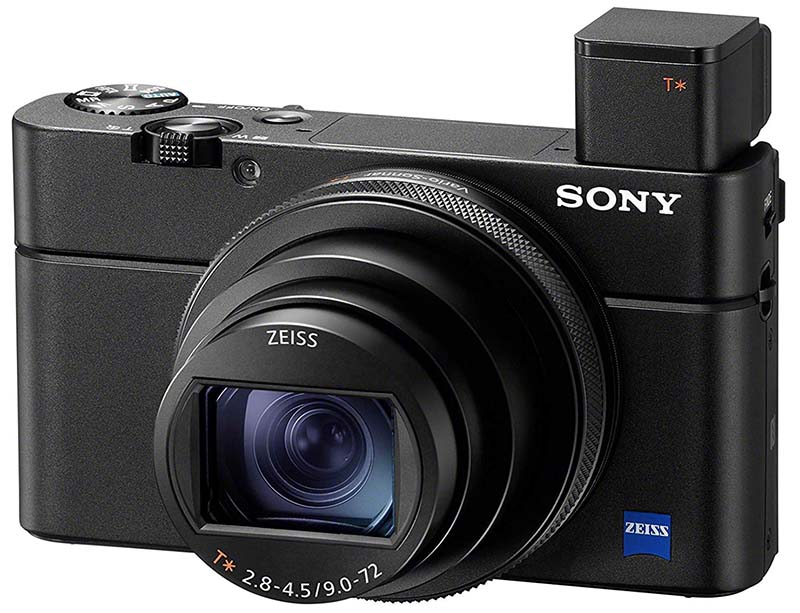 Sensor size: 116 sq. mm
Sensor size: 116 sq. mm
Megapixels: 20.1
Zoom: 24-200mm
Weight: 10.7 oz.
What we like: Premium image and video quality with all of the bells and whistles.
What we don’t: High price and slower lens than previous versions.
The Sony RX100 line is storied in the world of point-and-shoots, and in 2019 is on its seventh iteration. In evaluating the RX100 VII, let’s start with the good: this camera is ultra-high-end and comes with just about all of the premium features you could ask for. It has a large 1” image sensor, crisp Carl Zeiss lens with a 24-200mm range, shoots 4K video, and has advanced autofocus that is light years ahead of cheaper point-and-shoots. And at 10.7 ounces, it’s the ultimate compact camera for those who want a lighter-weight alternative to their mirrorless camera or DSLR.
Our biggest gripe with the Sony RX100 VII is price. Unless money were burning a hole in our pocket, we would hesitate to spend nearly $1,300 on any point-and-shoot. For that price, you can get a mid-range mirrorless camera like the Fujifilm X-T30 that will outperform this Sony (albeit with added size and weight). Furthermore, on the latest versions of RX100 including the VII, Sony extended the zoom range to 24-200mm at the sacrifice of aperture (it’s now f/2.8-4.5 instead of f/1.8-2.8 of the RX100 V, although that lens was only 24-70mm). These issues aside, you will be hard-pressed to find a point-and-shoot that offers better image and video quality or more features.
See the Sony RX100 VII
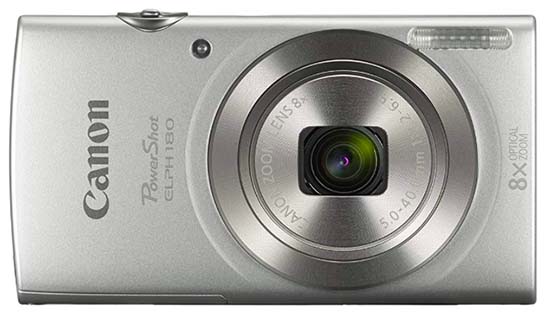 Sensor size: 28 sq. mm
Sensor size: 28 sq. mm
Megapixels: 20
Zoom: 28-224mm
Weight: 4.5 oz.
What we like: Bargain basement price; more zoom than competitors like the Sony WSC-800 below.
What we don’t: Won’t outperform the camera on most newer smartphones.
For a cheap alternative to the camera on your phone, or even for children learning the art of photography, the Canon PowerShot ELPH 180 can get the job done. On paper, the specs are pretty darn respectable for the price: 20 megapixels of resolution, a 28-224mm zoom range (significantly more zoom than other budget options like the Sony DSC W800 below), 720p video, and a low weight of just 4.5 ounces. And one of the reasons this camera is so popular is the easy-to-use functionality that Canon is known for. You just point, and shoot.
Our main issue with a camera like the ELPH 180 is that smartphones have rendered it largely obsolete. With its small image sensor and limited optics, a modern iPhone can capture considerably better people photos in Portrait mode, although the zoom on the Canon may come out a little cleaner. But the reality is that many people no longer need or want to carry two devices unless their dedicated camera outperforms their phone in some specific capacity. Unfortunately, the Canon ELPH 180 does not, although as mentioned above, it’s great for kids and those on a tight budget. If you want to spend even less, see the Sony WSC-800 below.
See the Canon PowerShot ELPH 180
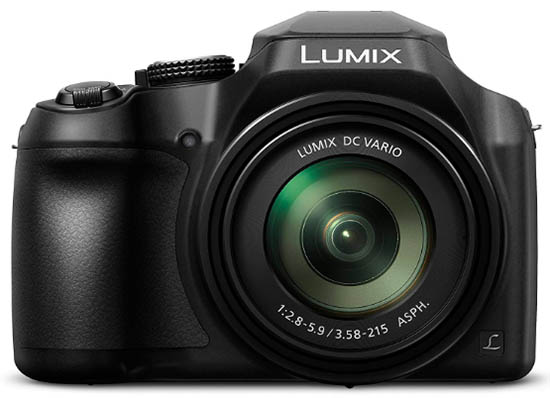 Sensor size: 28 sq. mm
Sensor size: 28 sq. mm
Megapixels: 18.1
Zoom: 20-1200mm
Weight: 21.7 oz.
What we like: Serious zoom capability for less than $300.
What we don’t: Small image sensor and large form factor.
In terms of big zoom, you’d be hard-pressed to find a better value than the Panasonic Lumix FZ80. For just under $300, this camera has a whopping 20-1200mm zoom range, which is enough to capture wildlife, sporting events, school plays, and just about anything else that you want to. In addition, the FZ80 shoots quickly at up to 10 frames per second, captures 4K video, and has image stabilization (O.I.S.) for helping to reduce camera shake. Throw in built-in Wi-Fi, and you have an impressive and modern camera at a reasonable price.
What are the downsides of the Panasonic FZ80? Part of the reason the price is so low is that the image sensor is small, and it dwarfs in comparison to some of the pricier superzooms on the market that can run $1,000 or more. In addition, the weight of 21.7 ounces means that this camera is far from pocketable—it feels more like a digital SLR or mirrorless camera than a compact point-and-shoot. But despite the shortcomings, the FZ80 packs a whole lot of zoom and features into an inexpensive package, which is why we have it ranked here.
See the Panasonic Lumix FZ80
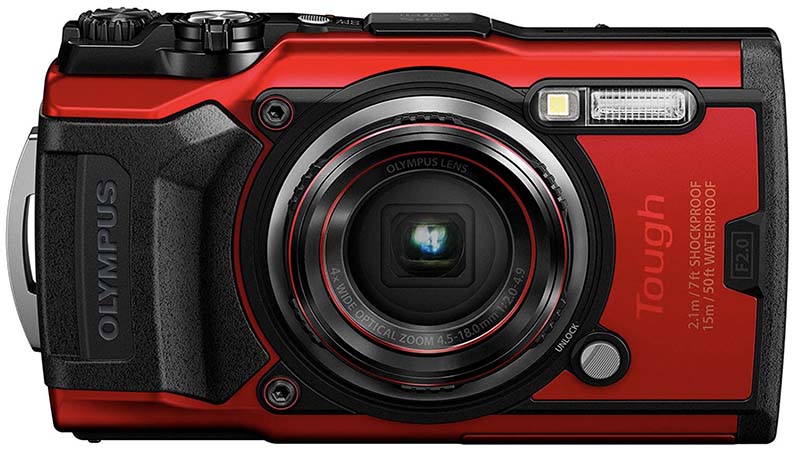 Sensor size: 28 sq. mm
Sensor size: 28 sq. mm
Megapixels: 12
Zoom: 25-100mm
Weight: 8.9 oz.
What we like: The only truly waterproof point-and-shoot on this list.
What we don’t: The casing is nice, but optical performance lags behind the price.
For most outdoor activities, we hesitate to recommend “tough” or “rugged” cameras unless you really need the extra protection. You pay a lot for a small image sensor and meager components, and a big chunk of the money goes to the waterproof housing that protects it all. Having said that, the Olympus TG-6 is best in its class: it’s waterproof down to 50 feet, dustproof, freezeproof, and has a fast aperture of f/2 for low light and underwater photos. We also like the 25-100mm zoom range, which goes wider than most tough cameras that often are 28mm at the wide end.
Keep in mind that the small sensor on this camera limits the quality of the photos and videos the Olympus TG-6 can produce, and particularly at this price point. But there’s no doubting the fun factor—you can take the camera just about anywhere without a worry. And we do like the 4K video functionality and Action Track Sensors, which use a built-in thermometer and GPS to assign temperature readings, location, and other data to your photos. And for underwater photography and deep dives, check out the SeaLife ReefMaster, which also shoots 4K and can get you all the way down to 130 feet underwater.
See the Olympus Tough TG-6
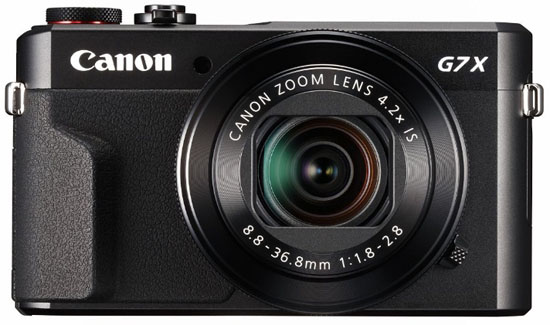 Sensor size: 116 sq. mm
Sensor size: 116 sq. mm
Megapixels: 20.2
Zoom: 24-100mm
Weight: 11.3 oz.
What we like: Superior focal length range compared to the G9 X Mark II above.
What we don’t: You still need to spend up for more features.
We’ll start by saying that it was a close call between the G7 X Mark II and G9 X Mark II above for the top spot on the list. Both have large 1” image sensors and come with tons of features including in-camera image stabilization, touchscreen functionality, the ability to shoot in RAW, and modern connectivity options. The big reason to choose the G7 Mark II is the lens: you get a focal length of 24-100mm instead of 28-84mm, and we can tell you firsthand that those 4mm matter for landscape photography, along with a faster f/1.8-2.8 lens. Add in a tilting rear LCD, and the choice comes down to how much you value those features.
What are the shortcomings of the Canon G7 X Mark II? It doesn’t shoot 4K video like many high-end compacts from Sony and Panasonic, nor does it have an electronic viewfinder (all shooting is done via the rear LCD). And compared to a much pricier camera like the Sony RX100 VII above, you’re sacrificing a whole host of things including zoom range, video speeds, autofocus speed and accuracy, and more. It’s worth noting that Canon released the G7 X Mark III in summer of last year and that camera does shoot 4K, but it has been plagued with focus issues at the outset and hasn’t met expectations, which is why we have the Mark II included here.
See the Canon PowerShot G7 X Mark II
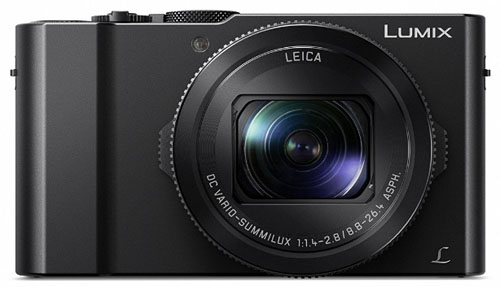 Sensor size: 116 sq. mm
Sensor size: 116 sq. mm
Megapixels: 20
Zoom: 24-72mm
Weight: 10.9 oz.
What we like: An impressive mix of image and video quality.
What we don’t: Less user-friendly than the competition.
For enthusiasts and aspiring videographers, the Panasonic Lumix LX10 is an intriguing point-and-shoot option. We absolutely loved the old LX7, and the newer LX10 is very competitive with advanced point-and-shoots from brands like Canon and Sony. Most notable is the f/1.4-2.8 lens, which is the fastest on the list and offers superb low light performance for a compact. The LX10 also shoots 4K video, which neither Canon above is able to do, and has a touchscreen, which even the pricey Sony RX100 V does not.
What are the downsides of the Panasonic Lumix LX10? One is the 24-72mm zoom range, which offers less focal length coverage than a camera like the Canon G7X Mark II above at 24-100mm. In addition, Panasonic compacts aren’t quite as intuitive or ergonomically pleasing as other top choices on this list. Canon is known for easy-to-use functionality across the board, and Sony has had six renditions of its RX100 series to hone things in. The Panasonic LX10 isn’t difficult to use, but the menu systems, buttons, and camera itself take more getting used to than we would prefer.
See the Panasonic Lumix LX10
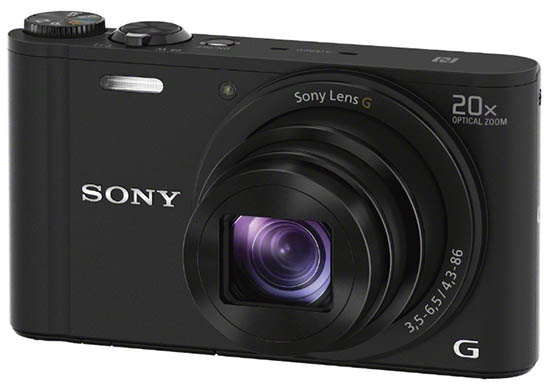 Sensor size: 28 sq. mm
Sensor size: 28 sq. mm
Megapixels: 18.2
Zoom: 25-500mm
Weight: 4.8 oz.
What we like: A healthy zoom range and feature set in a compact package.
What we don’t: No 4K video.
For travelers and others looking for maximum versatility in a small form factor, check out the Sony WX350. Unlike true superzooms like the hefty Panasonic FZ80 above, the WX350 checks in at an incredibly light 4.8 ounces yet still manages a healthy 500mm of zoom. And Sony has included most other modern features here, including Wi-Fi, image stabilization, fast shooting for action photography, and a host of fun modes to liven up your photography. Keep in mind that this camera does not come with 4K video—for that functionality, you’ll need to step up to the Sony DSC-HX99 or RX100 line (specifically, the RX100 IV and later).
Speaking of the Sony DSC-HX99, that nifty little point-and-shoot is one of the most likely competitors to the WX350 listed here. For the roughly $200 jump in price, you get a wider focal length range (24-700mm), 4K video, and a Carl Zeiss lens, albeit with almost the exact same aperture range. Given that the DSC-HX99 weighs quite a bit more at 8.5 ounces, for non-video shooters who don’t need the 4K, we give the nod to the cheaper WX350.
See the Sony WX350
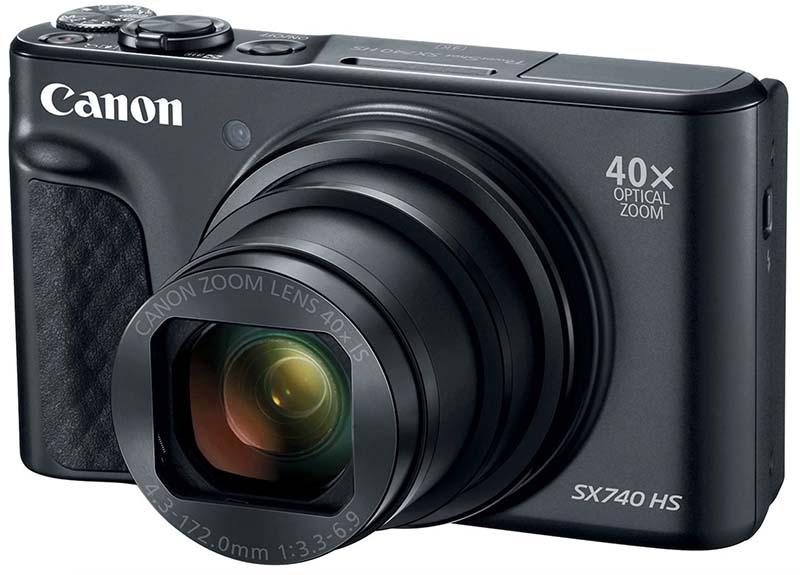 Sensor size: 28 sq. mm
Sensor size: 28 sq. mm
Megapixels: 20.3
Zoom: 24-960mm
Weight: 9.7 oz.
What we like: Huge zoom for such a lightweight camera.
What we don’t: Small image sensor.
The Canon SX740 HS is a very capable point-and-shoot in a compact package. This sleek camera is easily pocketable, shoots 4K video, and has built-in Wi-Fi for transferring images on the fly. But most importantly, you get big-time optimal zoom at 24-960mm, which is extremely impressive given the small form factor (for comparable zoom, you’ll have to step up to a bulky superzoom at more than double the weight). All in all, the SX740 HS makes a nice travel camera that packs some serious punch.
If you don’t need the zoom capability of the SX740 HS, we think the Canon PowerShot G9 X Mark II above (our top pick) is a better choice in the same price range. The image sensor on the SX740 HS is considerably smaller than the G9 X Mark II, the lens and low-light performance are inferior, and it has fewer features. And it’s worth noting that we liked older versions in this line better. Last year, for example, the similar Canon PowerShot SX720 HS was consistently available for under $300, which made it a more attractive value.
See the Canon PowerShot SX740 HS
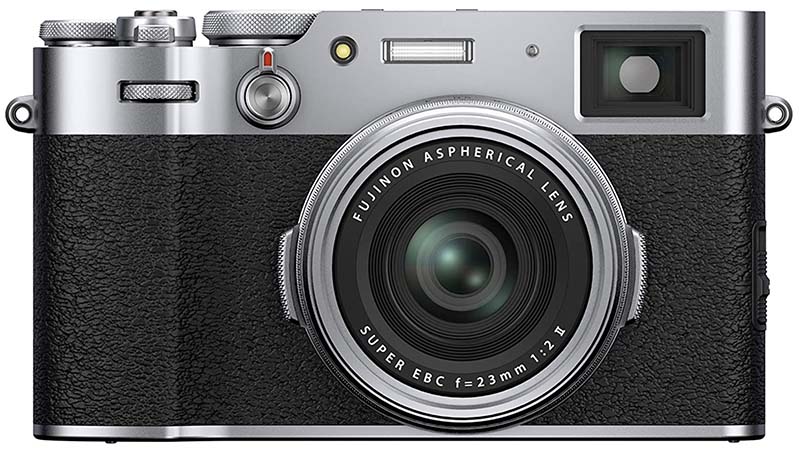 Sensor size: 368 sq. mm
Sensor size: 368 sq. mm
Megapixels: 26.1
Zoom: None (35mm prime lens)
Weight: 16.9 oz.
What we like: With a large image sensor and premium lens, this is a superb point-and-shoot for street photography and travel.
What we don’t: No zoom and high price.
Fujifilm occupies a unique realm in the point-and-shoot world, and the X100V is case in point. Essentially, this camera packs the guts of Fujifilm’s mirrorless interchangeable-lens cameras but with the size and simplicity of a compact. Most impressive is the extra-large APS-C image sensor, which is more than three times as big as the Sony RX100 series and high-end Canon point-and-shoots like the G7 X Mark II. You also get a very fast f/2 lens, although it is fixed at 35mm. Professionals and enthusiasts love prime lenses, but they are decidedly less versatile than zooms.
The Fujifilm X100V is new for 2020, and we included it over the older X100F, which currently retails for a few hundred bucks less on sale. We always love to save when merited, but the X100V version has better autofocus, a shaper lens, an articulating LCD screen, 4K video functionality, and improved weather sealing. Taken together, that is a whole host of improvements that make the X100V worth the upgrade.
See the Fujifilm X100V
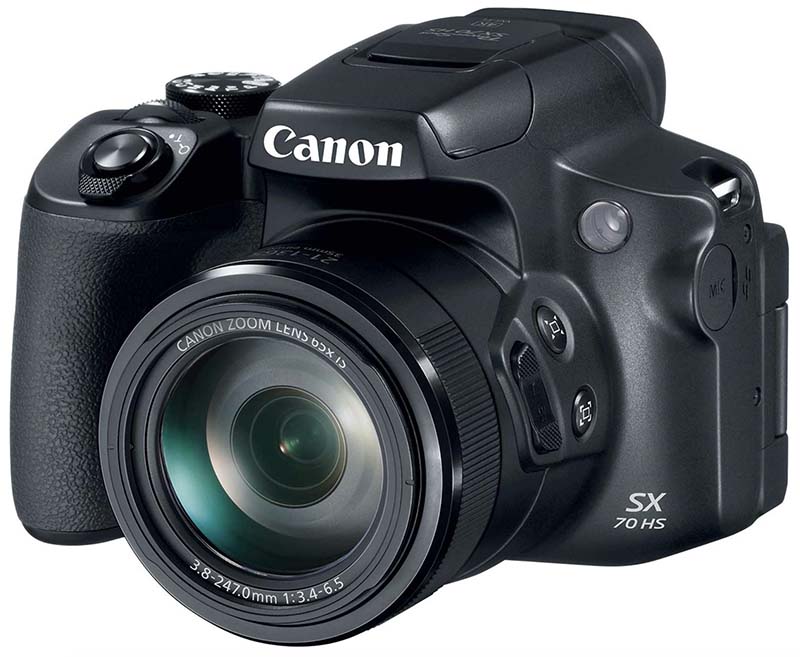 Sensor size: 28 sq. mm
Sensor size: 28 sq. mm
Megapixels: 20.3
Zoom: 21-1365mm
Weight: 21.4 oz.
What we like: Huge zoom along with nice wide-angle capability.
What we don’t: Heavy and bulky; small image sensor.
If you’re looking for big zoom without breaking the bank, check out the popular Canon SX70 HS. For just under $400, you get a massive 21-1365mm of range along with fast shooting at 10 frames per second, image stabilization, and Canon’s signature easy-to-use functionality. We also appreciate how the SX70 HS is 21mm at the wide end, which is rare for a camera of this type. This superzoom is large and definitely will not slide into your pocket, but for travel, action photography, and everyday use, it’s a solid option.
Why isn’t the Canon PowerShot SX70 HS higher on our list? The small image sensor is limiting, including for those who plan on making prints or shooting in tough conditions. The truth is that you have to a pay a lot more for a superzoom with a large sensor (see the Panasonic FZ1000 below, for example), which may be worth it for some people but lessens the appeal for most. But for a DSLR alternative with a ton of zoom and good features, we like the value of the SX70 HS.
See the Canon PowerShot SX70 HS
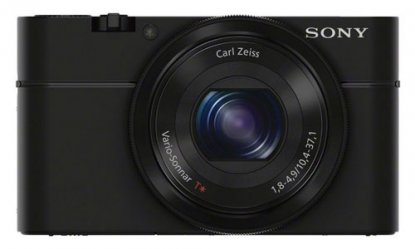 Sensor size: 116 sq. mm
Sensor size: 116 sq. mm
Megapixels: 20.2
Zoom: 28-100mm
Weight: 8.5 oz.
What we like: A nice value while supplies last.
What we don’t: Getting a little long in the tooth in terms of features.
In the camera world, it’s rare to have a 6-year-old model recommended so highly, but the original version of the RX100 remains the best value in Sony’s lineup. Simply put, the features have evolved quite a bit in the six renditions of this camera that Sony has released since 2012, but the image quality is surprisingly similar. Given that the latest RX100 VI is a whopping $1,198—you can get an outstanding mirrorless camera like the Sony a6300 with a lens for that price—we prefer to save with the older model that costs less than half that. It’s still an outstanding point-and-shoot camera in a compact and lightweight body.
What do you sacrifice by going with the original Sony RX100? An electronic viewfinder first was available on the RX100 III, which is a very nice addition, and 4K video was introduced on the RX100 IV. Further, the latest version is superior at the telephoto end (f/4.5 vs. f/4.9) and has a blazing-fast burst rate of 24 fps. All of those features matter, but the image sensor and megapixels remain almost identical. At some point we’ll have to remove the RX100 from this list, but given the price, it won’t be without a good fight.
See the Sony RX100
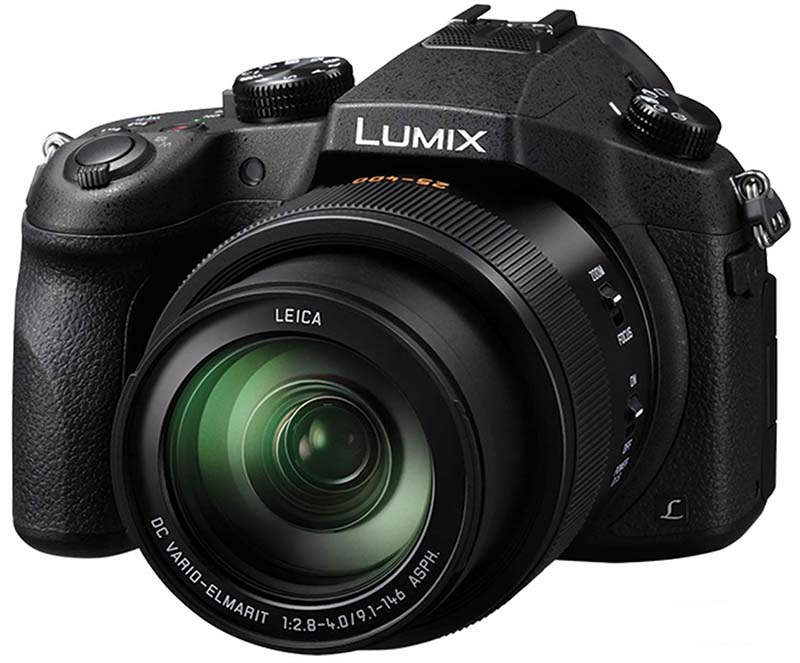 Sensor size: 116 sq. mm
Sensor size: 116 sq. mm
Megapixels: 20.1
Zoom: 25-400mm
Weight: 29.3 oz.
What we like: Tons of zoom and a 1” sensor.
What we don’t: Very heavy for a point-and-shoot.
If the size of your point-and-shoot isn’t a primary concern, give the FZ1000 from Panasonic a serious look. With this camera you get a large 1” image sensor along with an extraordinary amount of zoom at 25-400mm (this specialized category of point-and-shoot has earned the moniker “superzoom”). Other point-and-shoots offer even more zoom in smaller packages, but those models have also considerably smaller sensors and can’t compete with the optical quality of the FZ1000. And the cherry on top: the FZ1000 is one of the only cameras on this list that shoots 4K video.
The obvious concerns with a superzoom like the Panasonic FZ1000 are size and weight. This point-and-shoot is literally the size of a small DSLR, weighing in at a hefty 29.3 ounces. You certainly won’t be sliding the FZ1000 into your pocket, but the versatility and convenience are attractive for travel and for those who don’t want to carry and switch out multiple lenses. To be sure, it’s a viable alternative to an entry-level DSLR, albeit with a smaller sensor.
See the Panasonic Lumix FZ1000
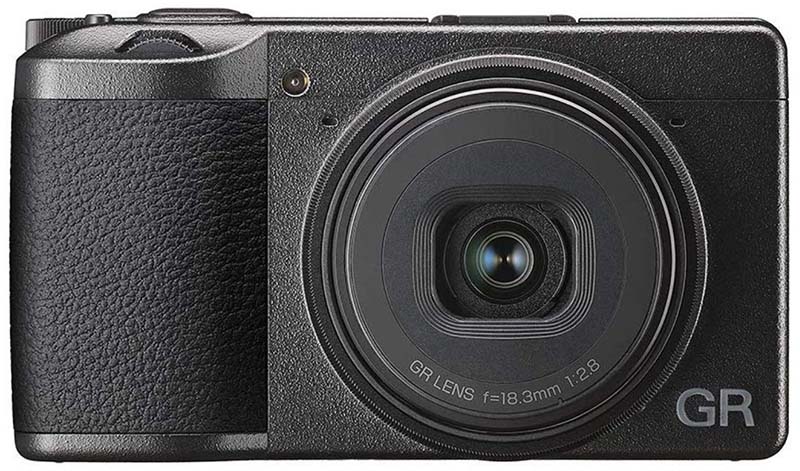 Sensor size: 368 sq. mm
Sensor size: 368 sq. mm
Megapixels: 24.2
Zoom: None (28mm prime lens)
Weight: 9.1 oz.
What we like: DSLR-sized image sensor at a very low weight and small size.
What we don’t: Pricey, and lack of zoom isn’t for everyone.
Realistically, the Ricoh GR III is a niche camera, but it’s still one of our favorite pro point-and-shoots on the market in 2020. Its most notable feature is the huge APS-C image sensor—the same size as many digital SLRs—in a compact body that weighs just over 9 ounces. You also get a crisp f/2.8 lens, fast and accurate autofocus, built-in image stabilization, and a number of other modern features. Keep in mind that the GR III has a fixed focal length equivalent to 28mm, which is great for travel and outdoor photography but isn’t for everyone. But if you want professional-grade image quality in a tiny package, the Ricoh GR III is a fun option.
For those looking to save, the old Ricoh GR II currently is selling for around $600. What are the differences between the two models? The GR II has fewer megapixels at 16.2, lacks built-in image stabilization, and has inferior autofocus, among other things. We still like the predecessor, which was released all the way back in 2015, but there are enough updates and improvements to merit the extra cost of the newer model, in our opinion. Both are excellent high-end points-and-shoots for those who want a compact alternative to a larger set-up.
See the Ricoh GR III
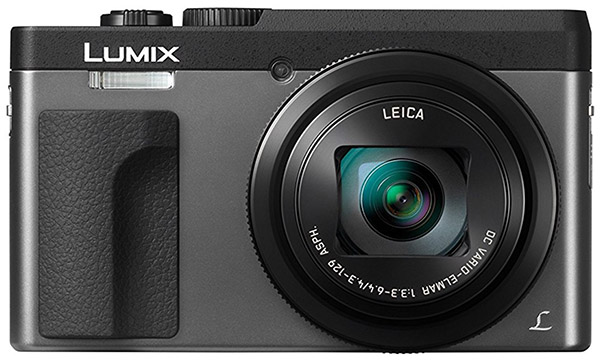 Sensor size: 28 sq. mm
Sensor size: 28 sq. mm
Megapixels: 20.3
Zoom: 24-720mm
Weight: 11.4 oz.
What we like: A feature-packed camera with a sleek design.
What we don’t: Smaller sensor and slower lens than the LX10 above.
If you like the looks of the Panasonic LX10 above but want more zoom, the ZS70 is a nice mid-range option. This point-and-shoot offers an impressive list of features for a camera in the sub-$300 price range, including 4K video, an electronic viewfinder, and a super versatile 24-720mm Leica lens. We also love the design and feel of the ZS70, which is sleek and functional while weighing just over 11 ounces. Panasonic point-and-shoots have been growing in popularity of late and travel zooms like the ZS70 are big parts of that equation.
The reasons that we would hesitate to spend for this camera are the image sensor and aperture of the lens. With a relatively teeny 1/2.3" sensor, the Panasonic ZS70 just can’t compete with the heavy hitters in terms of overall image quality. And one of the things we love most about the LX10 is its blazing fast f/1.4-2.8 lens, while the ZS70 clocks at a much slower f/3.3-6.4. The bells and whistles certainly are there with this camera and it’s a lot of fun to use, just don’t expect premium image quality or low light performance.
See the Panasonic Lumix ZS70
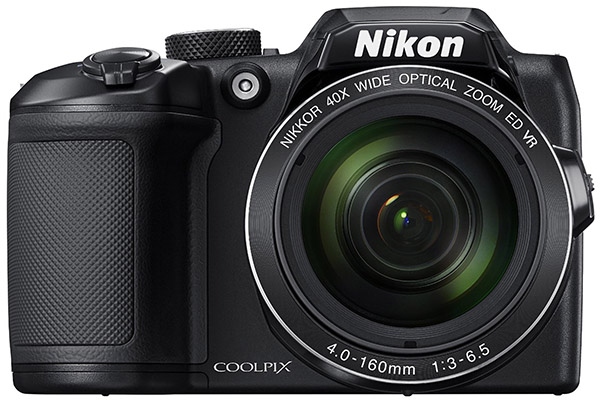 Sensor size: 28 sq. mm
Sensor size: 28 sq. mm
Megapixels: 16
Zoom: 22.5-900mm
Weight: 19.1 oz.
What we like: Goes slightly wider than the SX530 HS above at 22.5mm.
What we don’t: Autofocus and Wi-Fi connectivity issues.
Nikon hasn’t exactly been dominating the point-and-shoot market over the last few years, with brands like Sony, Panasonic, and Canon taking the reins. But we do like the Coolpix B500, a superzoom competitor to the popular Canon SX530 HS above. Both cameras are similarly priced and offer a ton of versatility with big zoom ranges. At the same time, both have small image sensors, few manual controls, and use 4 AA batteries, which adds to the cost over time unless you go rechargeable (and even that set-up costs something).
Why do we have the Canon SX530 HS ranked higher than the Nikon B500? We like the extra zoom (it goes longer at 1200mm), plus it weighs a few ounces less. Further, some users have reported that the B500 has trouble connecting to Wi-Fi, and like most budget superzooms, autofocus has a tendency to hunt. One upside of the Nikon B500 is that it goes slightly wider at 22.5mm vs. 24mm on the SX530 HS. This may not seem like much of a difference, but for landscape photography and the outdoors, we’ll take anything extra we can get.
See the Nikon Coolpix B500
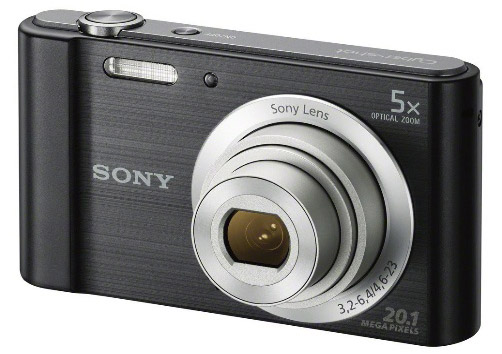 Sensor size: 28 sq. mm
Sensor size: 28 sq. mm
Megapixels: 20.1
Zoom: 28-130mm
Weight: 4.7 oz.
What we like: Bargain-basement price and low weight.
What we don’t: Not super sharp and the Canon ELPH 180 above offers more zoom.
Despite the continually improving quality of the camera on your phone, there still is a time and place for a dedicated point-and-shoot. And if you are looking to spend as little as possible in this category, the Sony DSC-W800 is your best bet. The specs are decent: you get 20.1 megapixels of resolution and a 26-130mm zoom lens. At just 4.7 ounces and with a slim form factor, you’ll barley even know it’s in your pocket or backpack.
Why is the Sony DSC-W800 ranked at the bottom of this list? Our top budget pick, the Canon PowerShot ELPH 180 above, offers a more substantial 28-224mm zoom range for less money, and that camera even manages to weigh slightly less at 4.4 ounces total. In addition, some users have complained about occasional blurriness and a lack of sharpness from the Sony DSC-W800, which is the result of the small sensor and budget lens and components. That said, you can’t beat the price or size, which is why we’ve included it here.
See the Sony DSC-W800
| Camera | Price | Sensor | MP | Zoom | Aperture | Weight | 4K |
|---|---|---|---|---|---|---|---|
| Canon PowerShot G9 X Mark II | $429 | 116 sq. mm | 20.2 | 28-84mm | f/2-4.9 | 7.3 oz. | No |
| Sony RX100 VII | $1,298 | 116 sq. mm | 20.1 | 24-200mm | f/2.8-4.5 | 10.7 oz. | Yes |
| Canon PowerShot ELPH 180 | $109 | 28 sq. mm | 20 | 28-224mm | f/3.2-6.9 | 4.5 oz. | No |
| Panasonic Lumix FZ80 | $298 | 28 sq. mm | 18.1 | 20-1200mm | f/2.8-5.9 | 21.7 oz. | Yes |
| Olympus Tough TG-6 | $379 | 28 sq. mm | 12 | 25-100mm | f/2-4.9 | 8.9 oz. | Yes |
| Canon PowerShot G7 X Mark II | $589 | 116 sq. mm | 20.2 | 24-100mm | f/1.8-2.8 | 11.3 oz. | No |
| Panasonic Lumix LX10 | $498 | 116 sq. mm | 20 | 24-72mm | f/1.4-2.8 | 10.9 oz. | Yes |
| Sony WX350 | $288 | 28 sq. mm | 18.2 | 25-500mm | f/3.5-6.5 | 4.8 oz. | No |
| Canon PowerShot SX740 HS | $399 | 28 sq. mm | 20.3 | 24-960mm | f/3.3-6.9 | 9.7 oz. | Yes |
| Fujifilm X100V | $1,399 | 368 sq. mm | 26.1 | 35mm | f/2 | 16.9 oz. | Yes |
| Canon PowerShot SX70 HS | $399 | 28 sq. mm | 20.3 | 21-1365mm | f/3.4-6.5 | 21.4 oz. | Yes |
| Sony RX100 | $448 | 116 sq. mm | 20.2 | 28-100mm | f/1.8-4.9 | 8.5 oz. | No |
| Panasonic Lumix FZ1000 | $598 | 116 sq. mm | 20.1 | 25-400mm | f/2.8-4 | 29.3 oz. | Yes |
| Ricoh GR III | $1,420 | 368 sq. mm | 24.2 | 28mm | f/2.8 | 9.1 oz. | No |
| Panasonic Lumix ZS70 | $298 | 28 sq. mm | 20.3 | 24-720mm | f/3.3-6.4 | 11.4 oz. | Yes |
| Nikon Coolpix B500 | $257 | 28 sq. mm | 16 | 22.5-900mm | f/3-6.5 | 19.1 oz. | No |
| Sony DSC-W800 | $120 | 28 sq. mm | 20 | 28-130mm | f/3.2-6.4 | 4.7 oz. | No |
Enthusiast (Professional)
Given the rise of camera phones and their continually improving quality, in 2020 most camera manufacturers are focusing their energy on enthusiast or professional point-and-shoots. Many of these cameras have large 1” image sensors, fast lenses, and a number of handy features like tilting LCD screens and 4K video. Much of the top half of this list consists of enthusiast models, led by the Canon G7 X Mark II and Sony RX100 series.
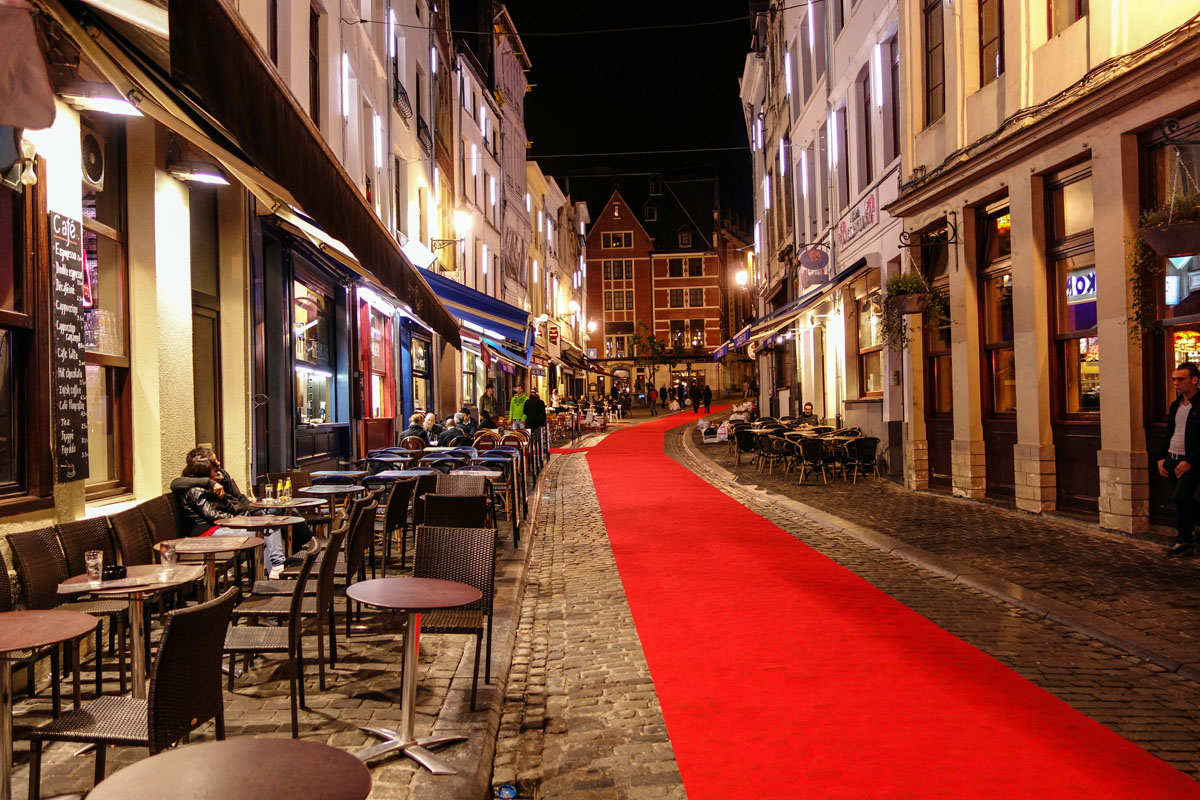
Mid-Range
Mid-range point-and-shoots usually are big on features but sacrifice in the size of the image sensor (many are a relatively small 2/3"). If you don’t plan on enlarging your photos or want features like big zoom at a reasonable price point, mid-range cameras are a nice compromise of price and performance.
Entry Level
To be sure, this end of the point-and-shoot spectrum is retreating. We can remember when almost everyone on vacation carried a cheap point-and-shoot (ourselves included), but the rise of the camera phone makes it impractical to carry two devices that do similar things. The latest iPhone, for example, has pretty darn impressive cameras (plural) and a Portrait Mode that rivals or outperforms an entry-level point-and-shoot. And even if a designated camera is slightly better on paper, the convenience of a smartphone wins out. For these reasons, we generally recommend going with an enthusiast or mid-range model. The exceptions, of course, are if you don’t own a phone with a camera or don’t want to carry it with you while doing activities like backpacking or skiing.
Point-and-shoot cameras have an attached lens, as opposed to interchangeable lenses found on DSLRs or mirrorless cameras, and many models have a fairly versatile zoom. For example, the Sony RX100 VII has a zoom range of 24-200mm, but the the Canon PowerShot SX720 HS offers a very impressive 24-960mm, albeit at the sacrifice of other features.
A popular trend in recent years has been superzoom cameras, which have an extremely long zoom range up to 1000mm or more. Smartphones are notoriously poor at zooming and this is one way that camera manufacturers can continue to drum up interest. Superzooms are really cool cameras—we love the Canon PowerShot SX70 HS, for example, which has 21-1365mm of optical zoom and costs under $400. Superzooms have two main issues, however. They are considerably heavier and bulkier than normal point-and-shoots (closer to a DSLR than a point-and-shoot, in fact), and the image sensors on superzooms usually are small, often 1/2.3". But for travel, sporting events, school plays, or wildlife photos, these are very fun cameras to use.
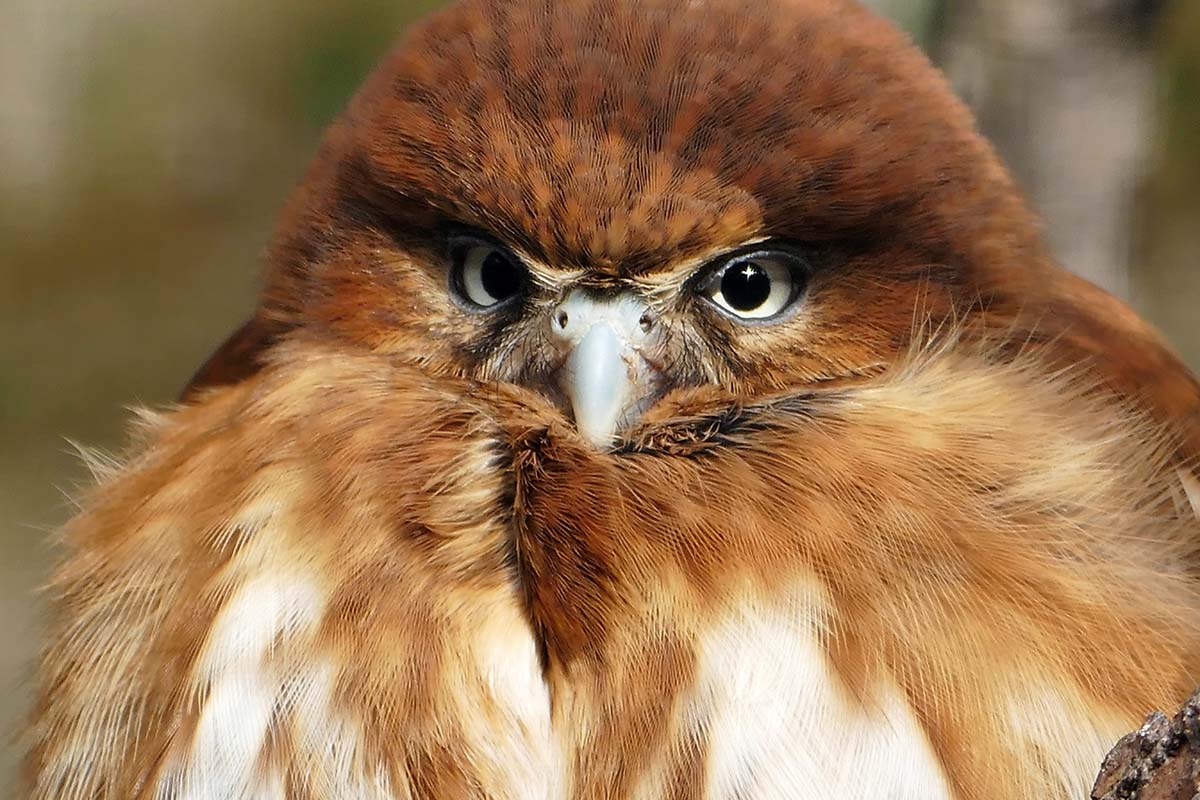
Before making a purchase, we recommend thinking through which types of photos you will be taking most. Generally, wide-angle photos are taken from 18 to 24mm, street photography at 24 to 35mm, portraits from 50 to 100mm, and telephoto shots from 100mm and up. Only get a superzoom if you plan on using that end of the zoom range frequently.
Marketers push megapixels as the central factor in determining the image quality your camera produces, but in reality it’s the size of the sensor. A common analogy in photography is that megapixels are like buckets used to collect rain (rain being light and color). The larger the buckets, the more rain they will collect. Accordingly, 20 megapixels on a small sensor (small buckets) are much less effective at capturing light than 20 megapixels are a large image sensor (large buckets). Below are common sensor sizes found on point-and-shoot cameras:
Almost all entry-level and some mid-range point-and-shoots have 1/2.3” CMOS image sensors. The higher the price the more likely you are to get a larger sensor—most high-end point-and-shoots either have 1” or 1/1.7” CMOS sensor. Some professional compact cameras have APS-C image sensors but those are a rarity (the Ricoh GR III and Fujifilm X100F have the largest on this list).
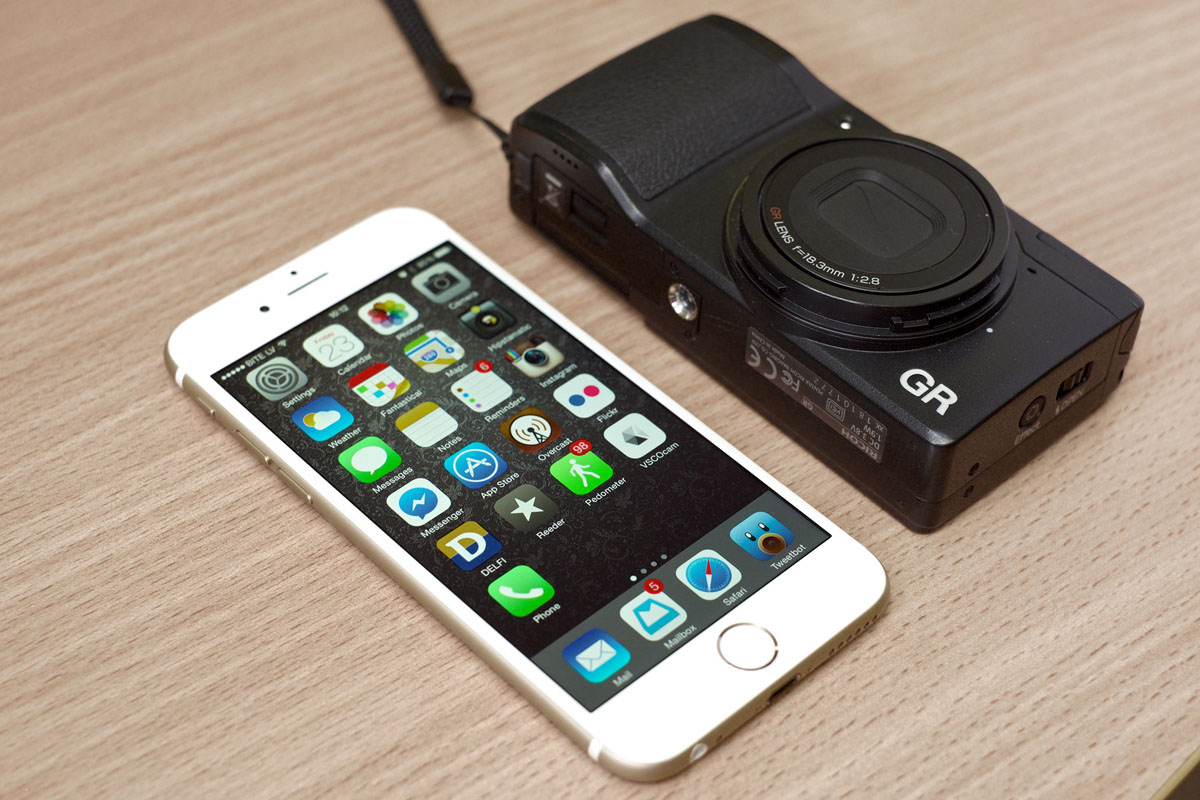
A pixel is one dot of information, and digital photographs are made up of millions of these dots. To make the calculations more palpable, we use the term megapixels (mega = million). So if a camera has 18 megapixels, the photographs are comprised of 18 million tiny dots.
As described above in relation to the image sensor, the number of megapixels can be misleading. If Camera X has 24 megapixels and Camera Y has 12 megapixels, this does not necessarily mean that Camera X produces higher-quality images. If Camera Y has a larger sensor, higher ISO sensitivity, and a superior lens, you can expect better photos from fewer megapixels.You shouldn’t totally ignore megapixels either. An astute camera buyer should look at sensor size first, then the number of megapixels, and try to gauge how those two numbers stack up against the competition (we’ve tried to make things easier with our handy comparison table above). Generally, the more you pay for a camera the larger the sensor and higher the number of megapixels.
A major point of differentiation between budget and high-end point-and-shoots is the low light performance of the lens and camera. In terms of the lens, the important number to look at is maximum aperture, expressed in f-stops ranging from f/1.4 to f/22 or higher. The lower the number, the wider the lens can open and the more light enters the camera. At the low end of the spectrum is a camera like the Panasonic Lumix LX10 with a maximum aperture of f/1.4. Most mid-range and budget point-and-shoots have maximum apertures from around f/2 to f/3.5. You’ll notice that maximum aperture is expressed in two numbers covering both the wide and telephoto end (f/1.8-4.9, for example).
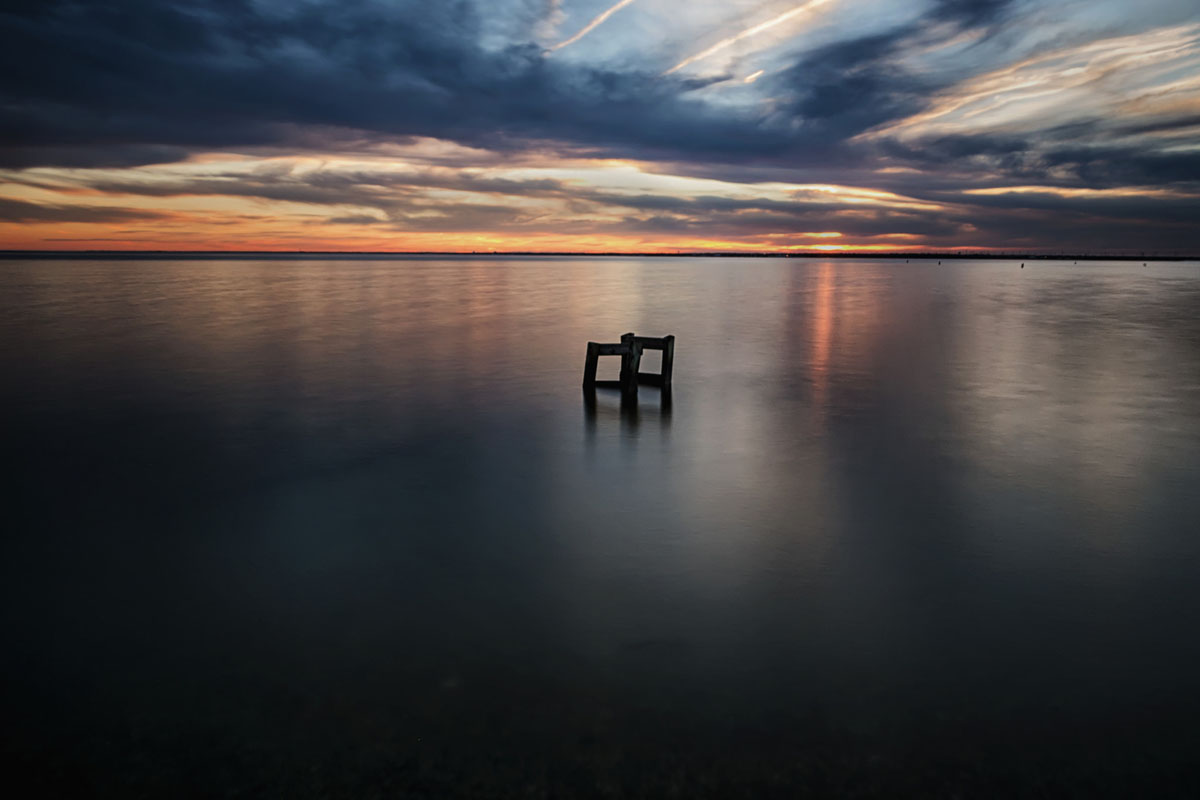
In terms of the low light performance of the camera itself, the number to look for is ISO sensitivity (commonly referred to simply as ISO). The higher the ISO, the more sensitive a camera is to light and the less likely you are to get noise (graininess you often see on photos taken by cheap cameras or your smartphone). A camera like the popular Canon PowerShot ELPH 180 isn’t particularly good in low light with an ISO sensitivity of 100-1600, while the Sony RX100 VII has a much more impressive range of 24-25600 extended. Taken together with the maximum aperture of the lens, these factors are what determine the low light performance of your point-and-shoot.
Like zoom, video is an increasingly sought-after camera feature. Full HD 1080p (1920 x 1080 pixels) is standard in 2020, even on point-and-shoots. Some budget models only shoot 720p (1280 x 720 pixels) but they are increasingly scarce. At the top end of the spectrum, various professional compacts now offer 4K video (4096 x 3072 pixels) including the Sony RX100 VII and Panasonic LX10.
In terms of overall video quality, there is more to evaluate than just the resolution. The quality of the autofocus, ISO sensitivity, size of image sensor, and other features like image stabilization all play a role in the video your point-and-shoot produces. Dedicated videographers also like to experiment with different movie speeds, with the most common being 60 fps, 30 fps, and 24 fps. Pricier point-and-shoots usually offer more video speeds to choose from.
A final feature you’ll often see referenced is a “dedicated movie button.” This means that instead of having to navigate through the menu via the buttons or touchscreen, one button (usually red) on the outside of the camera will have you shooting video almost instantaneously. Again, point-and-shoot manufacturers have to compete with smartphones, and the dedicated movie button is another way that they do so.
The method of plugging in your camera to a USB port on a desktop or laptop and uploading photos manually is becoming increasingly unnecessary. Built-in Wi-Fi is a nice perk on many new point-and-shoot cameras, allowing you to transfer and upload photos and video to your device or social media platform directly from the camera. Some even offer light editing directly on camera. The software and Wi-Fi platforms vary by manufacturer, and some are easier to use and less buggy than others, but we like the option of using Wi-Fi when it’s convenient.
The rear LCD screen is another point of differentiation between point-and-shoots. Most screens are LCD and around 3 inches in size, with the resolution varying significantly across price points. Higher resolution and brighter screens come in handy when the conditions are tough and you are trying to line up a shot. On some high-end models you get a tilting LCD for difficult angles and even touchscreen functionality that can be easier to navigate than with buttons. The LCD screen isn’t a make-or-break feature for us, but they do get nicer as you spend more and the difference is noticeable.
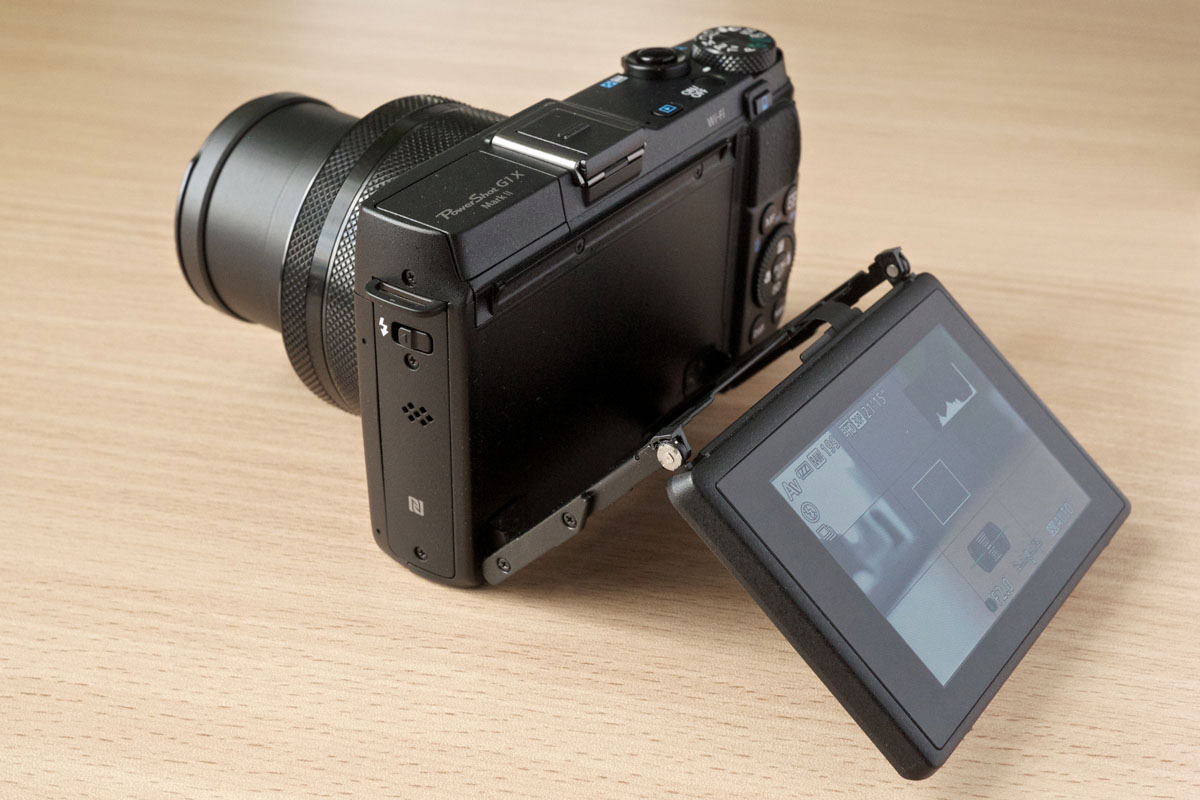
Some advanced point-and-shoots have either an electronic or optical viewfinder. This desirable feature means that instead of lining up photos via the rear LCD screen, you can look through the viewfinder located at the top of the camera. For professionals and enthusiasts who demand accuracy and produce a high volume of photos, a viewfinder almost is a necessity. Again, electronic viewfinders are rare on point-and-shoots and usually the territory of digital SLRs and some mirrorless cameras, but on new high-end models like Sony RX100 VII, having an electronic viewfinder undoubtedly is advantageous.
There are a number of “rugged” digital cameras on the market, with our favorite being the Olympus Tough TG-6. These cameras are essentially entry-level point-and-shoots with an exterior casing that makes them waterproof, dustproof, and shockproof (the specificities such as waterproof depth depend on the model).
First and foremost, no camera is actually waterproof—you can see by combing through various reviews on sites like Amazon that rugged cameras can spring the occasional leak. Moreover, you pay quite a premium for the extra protection, often getting a camera that is relatively basic in terms of image quality. The Olympus TG-6 currently retails for a pricey $349, despite having entry-level specs—you can get an excellent mid-range point-and-shoot that isn’t weather-resistant for around that price.
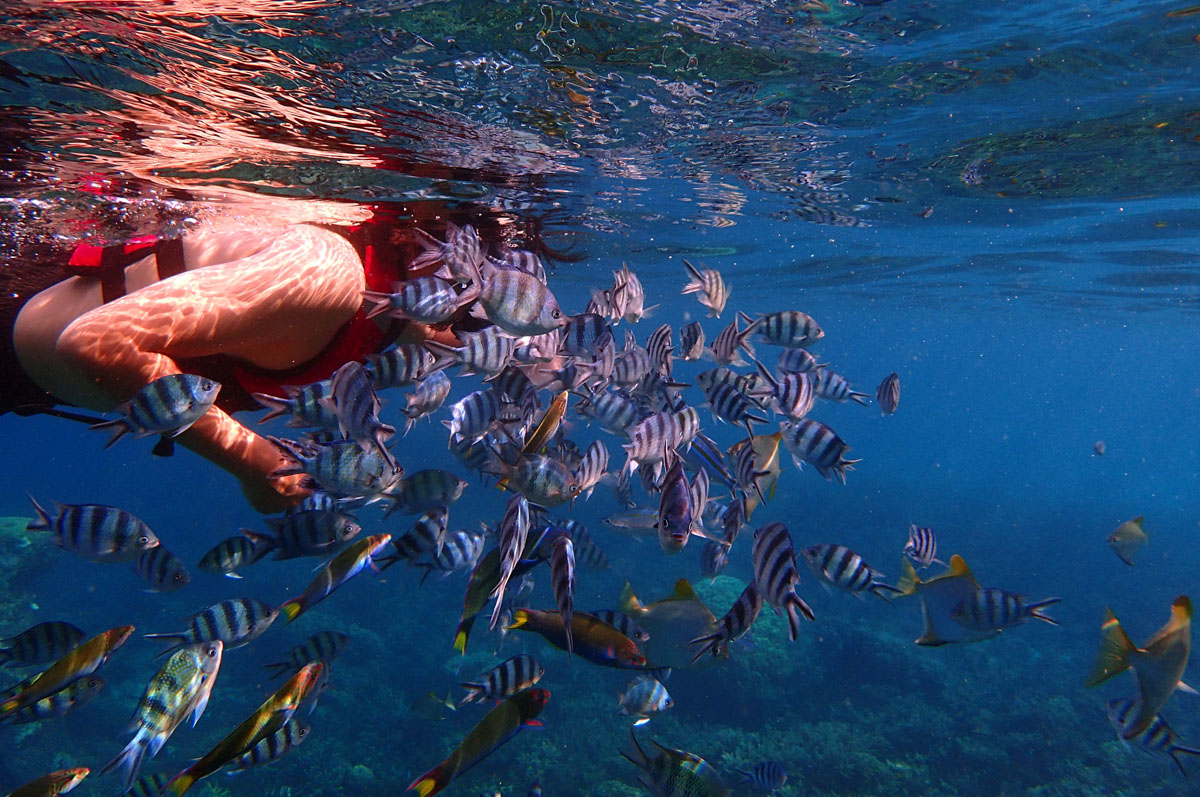
Rugged cameras make the most sense for activities with serious exposure to the elements like snorkeling, rafting, surfing, climbing, skiing, and snowboarding in inclement weather. They work well for beach vacations too—sand is one of the biggest enemies of any camera or lens and the extra sealing helps to prevent tiny pebbles from entering your electronics. For normal travel and outdoor use, we recommend buying a regular camera that is optically superior and taking reasonable care to store it. Even a normal case inside a Ziploc bag will protect your camera in most conditions.
The good news for consumers is that memory cards continue to get faster and cheaper. A few years ago, Class 10 cards, which have a minimum write speed of 10 MB per second, were expensive and there was an actual decision to make between those and slower Class 4 cards. By 2020, the price of Class 10 cards has dropped to the same range as Class 4 cards and it’s a no-brainer (Class 4 cards are basically extinct).
Our favorite SD memory card for point-and-shoots is the SanDisk Extreme, which offers fast write and read speeds (up to 70 MB/s write and 150 MB/s read). You also get protection from the elements: the SanDisk Extreme is rated as waterproof, shockproof, X-ray proof, and can operate in temperatures from -13 to 185 degrees Fahrenheit. We like the extra peace of mind, but if you don’t care about the durability of your card, the SanDisk Ultra is slightly cheaper.
In terms of storage, a 64GB card is relatively inexpensive (a fraction of what it used to be) and a nice size for a point-and-shoot that won’t have you consistently running to your computer to upload and delete photos. If you frequently shoot 4K video or won’t have access to uploading, 128 and 256 GB cards are available, although those are overkill for most point-and-shoot users.
Back to Our Top Point-and-Shoot Picks Back to Our Point-and-Shoot Comparison Table